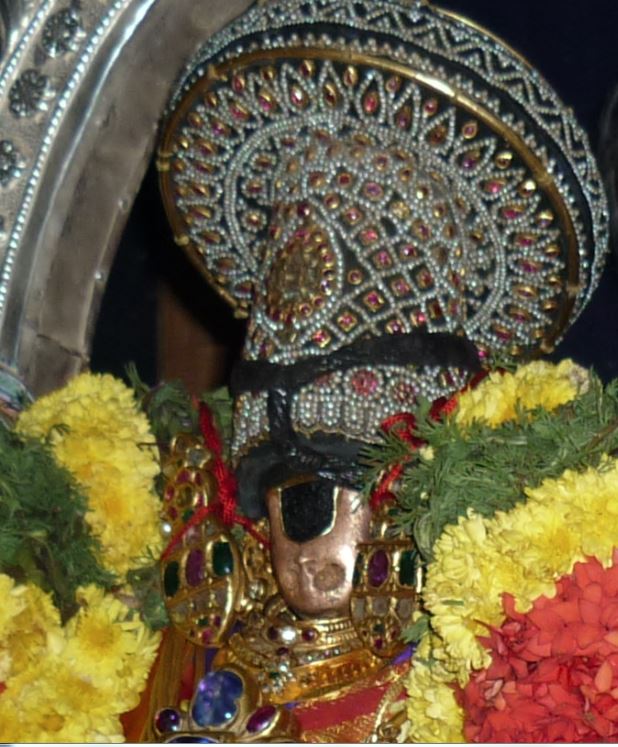
Today is the Thirunakshatram of Swami Kulasekara Azhwar, Lets enjoy one of the small writeup by a Parama Bhaagavatha on Kulasekara Azhwar Pasuram .
KumbhE Punarvasubhavam KeraLE ChoLa PattaNE
KaustubhAmsham DharAdheesham KulashekaramAshrayE
Today Masi Punarvasu is the Birthday (Thirunakshathram) of KulasekarAzhwAr.It is adiyEn’s delight and Bhagyam to post a slokam from his Mukunda mala for our enjoyment and our obeisance to the Great AzhwAr.
namaami nArAyaNa paadha pankajam/
karOmi nArAyaNa poojanam sadhA/
vadaami nArAyaNa naama nirmalam/
smaraami nArAyaNam tattvam avyayam/
At every moment, I bow down to the Lotus Feet of Narayana ; I perform worship to Narayana; I recite the purest Divine Name of Narayana and I reflect upon the Greatest truth of Narayana.

krishNa tvadheeya padha pankaja pancharaantham
adhyaiva mE visathu maanasa raaja hamsa:/
praaNa prayaaNa samayE kapa vaadha pitthai:
kaNTavarOdhanavidhou smaraNam kuthasthE?//
(adiyEn’s free translation)Oh KrishnA! At this momet, at this spot of time, in my life, let the swan of my manas (mind), enter the Lotus Feet of Yours..How can I remember You at the dying moment when my throat is choked with phlegm (and emotions), mucus, bile and air (gasping..)
so, appOdhaikku ippOdhE solli vaitthEn..
Writeup : Sri Madhavakannan









Azhwar offers a rather scientific solution to in the verse 16 of the same Mukundamala stotram – Jihve Keerthaya Kesavam. (Verse 20 in the longer version.)
How can asking the sense to worship the Lord possible kindle his memory at the final moments. Well one of the key words here is “Jigra grana mukunda pada tulasim”. where he advises the nose to smell the tulsi plant which is from the feet of Mukundan.
Here comes the very scientific basis for this assertion. http://www.tsbvi.edu/seehear/summer05/smell.htm
Summarising the above information into three or four key points for our discussion.
a) All other responses (sight sound touch etc, travel to brain through spinal cord), whereas smell or olfactaory nerves are directly connected to the brain / CNS. So the processing is instantaneous.
b)This sense is linked closely to areas of emotions, motivations and memory. It is linked in an ancient or very fundamental level of the brain that deals with instinctive or automatic behaviors, and has little, if anything, to do with conscious thought or will.
c) With memory comes a person’s recognition of an event, their emotions and responses.
d) Unlike sights, sound the with associates the latest image seen or sound heard with a stimulus, nasal or olfactory memory association relates to the earliest memory of the stimuli. Which is why simple kitchen smell like asfoetida etc, brings back the memory of mother’s cooking or her sambhar.
e) By training our mind to associate the smell of tulasi with Mukunda pada tulasi we can automate our responses to think of him, so even if one is bed ridden and semi/ unconcious, the smell of tulasi at the nose of someone in the final moments can stimulate the thoughts of Mukundan’s thiruvadi.
I like the article on the Scientific Solution offered by Azhwars on the verse 16 of Mukundamalai .